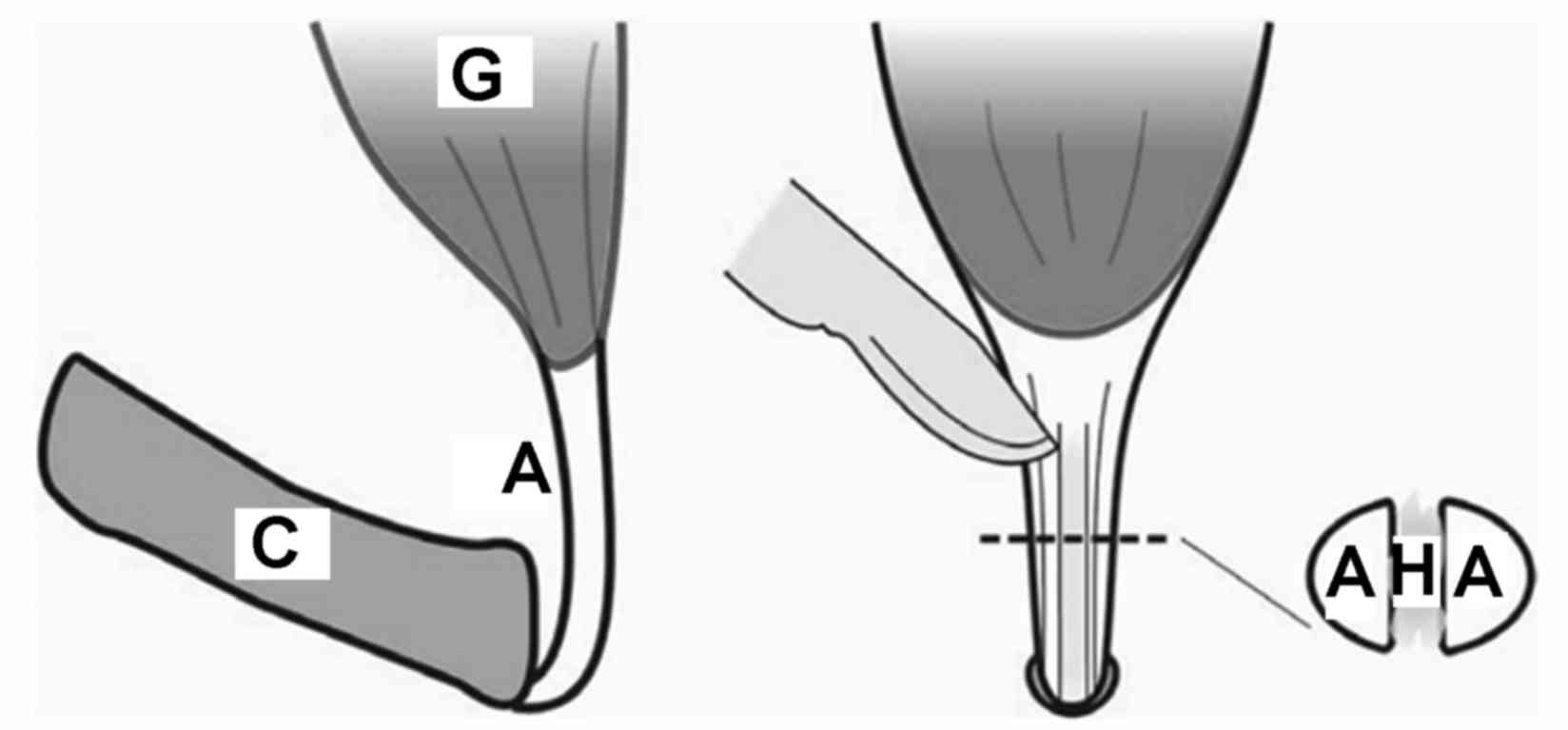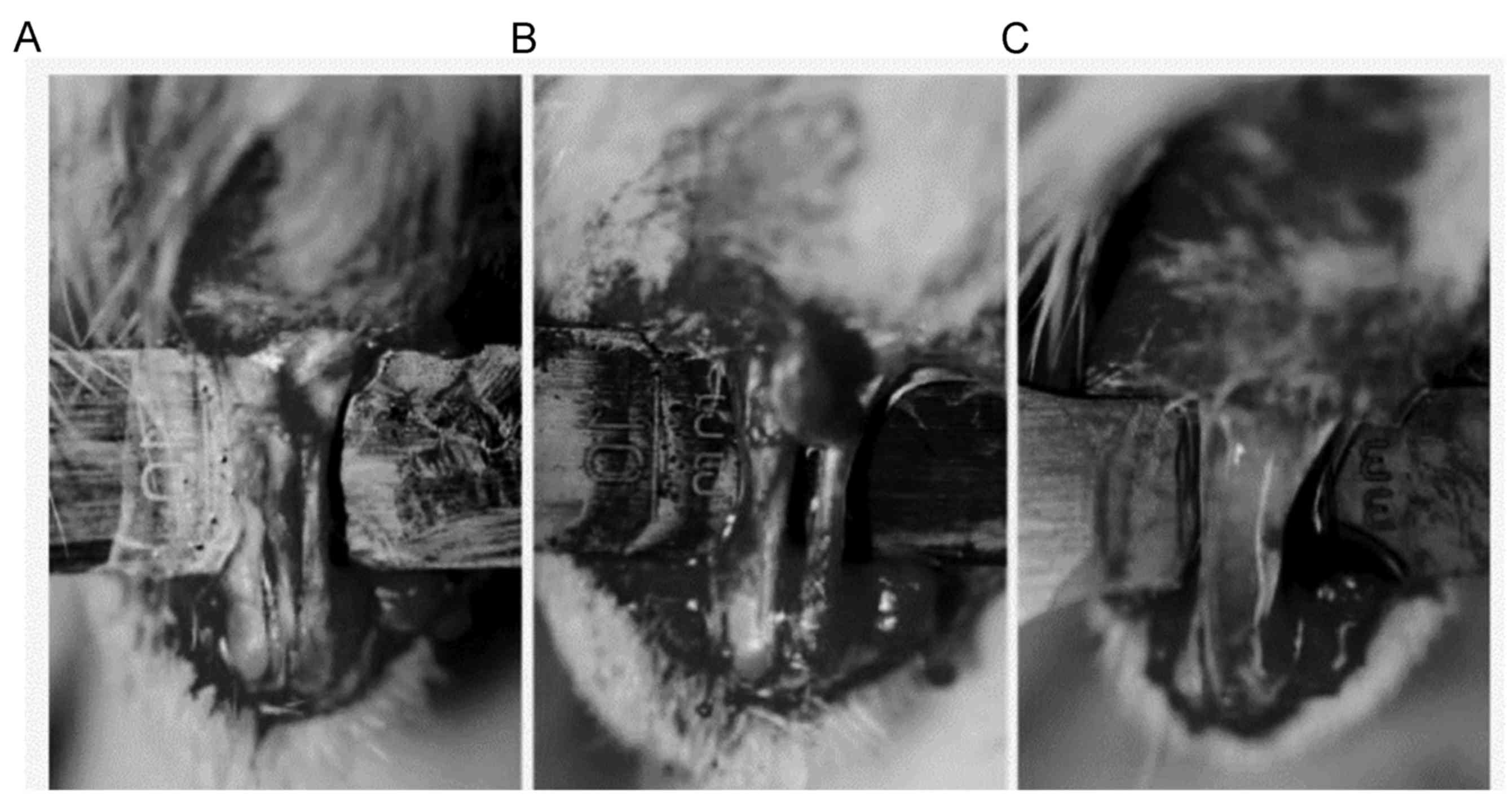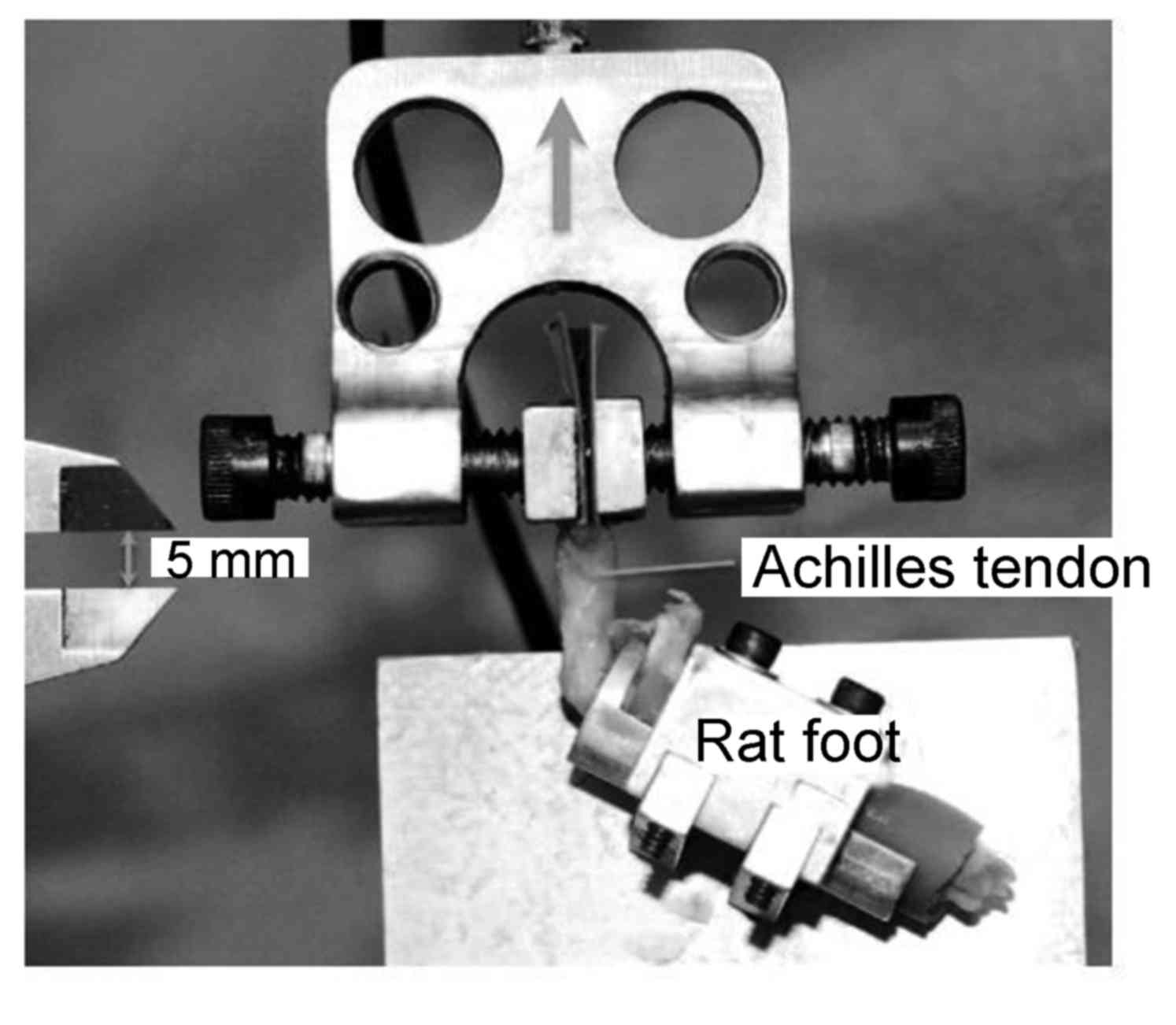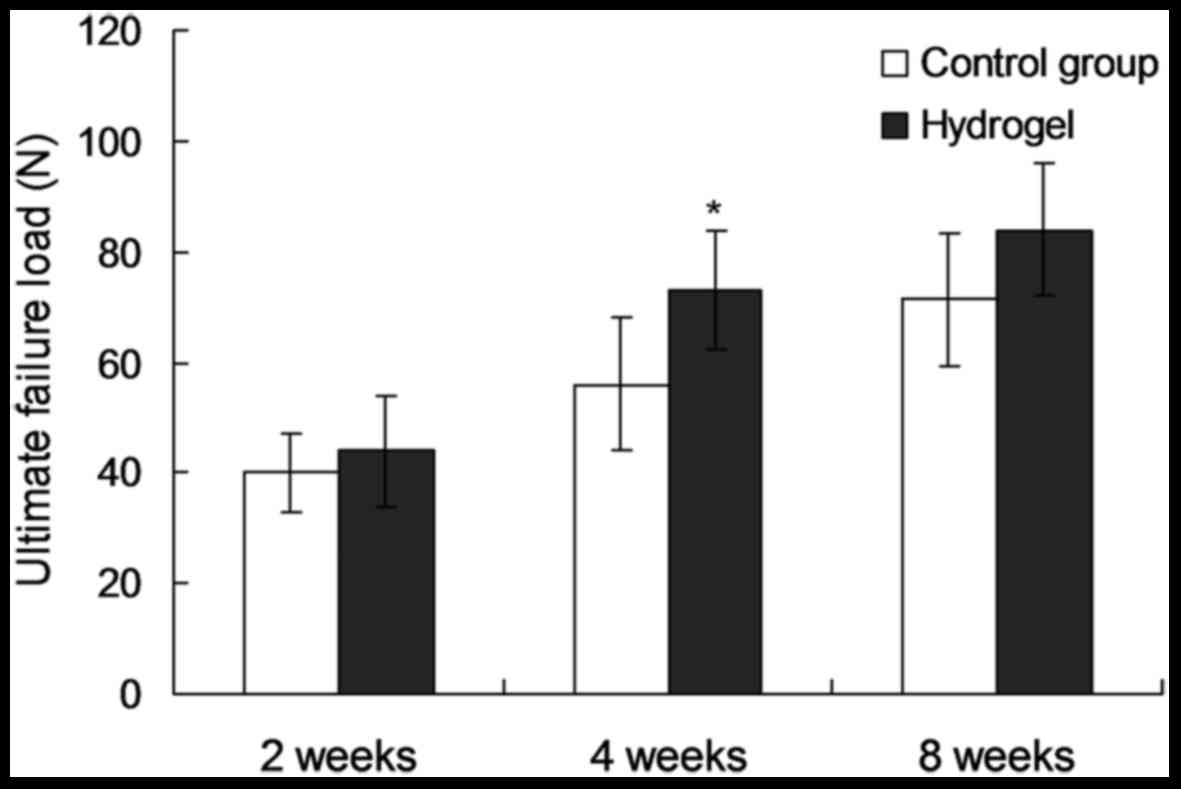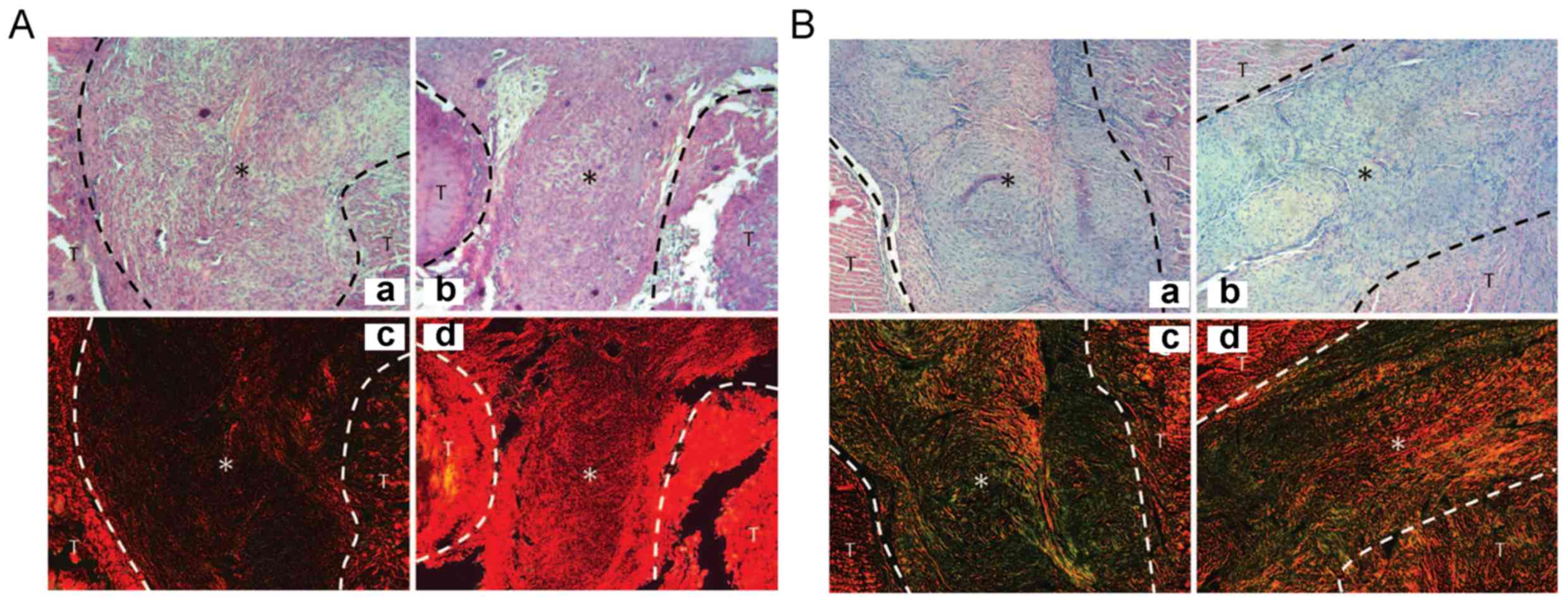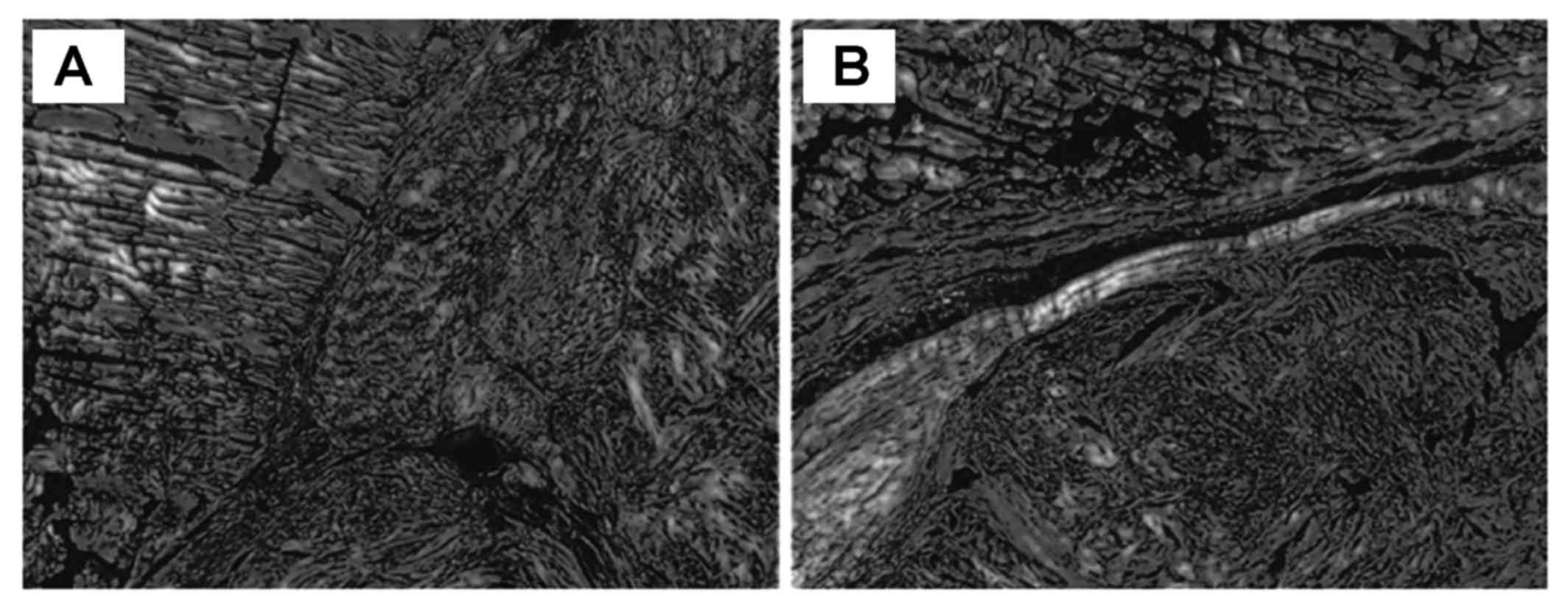Effect of tendon hydrogel on healing of tendon injury
Retraction in: /10.3892/etm.2018.6022
- Authors:
- Published online on: August 24, 2017 https://doi.org/10.3892/etm.2017.5020
- Pages: 3955-3960
-
Copyright: © Chen et al. This is an open access article distributed under the terms of Creative Commons Attribution License.
Metrics: Total
Views: 0 (Spandidos Publications: | PMC Statistics: )
Total PDF Downloads: 0 (Spandidos Publications: | PMC Statistics: )
Abstract
Hand trauma arising from postoperative acute or chronic tendon injuries leads to delayed union and is one of the greatest challenges in clinical practice. The present study hypothesized that an extracellular matrix hydrogel made from tendons can promote tendon healing and improve tissue regeneration. To verify this, 36 Wistar rats were subjected to bilateral full‑thickness injury of their Achilles tendons, starting from the heel bone along the center line to remove a segment of 5 mm in length and 0.5 mm in width. On the sites of injury, hydrogel was injected on one side, while the contralateral side was injected with an equal volume of normal saline. At 2, 4 and 8 weeks after the operation, bilateral tendons were subjected to biomechanical tests to determine the ultimate failure load, tensile strength and toughness, and cross‑sectional slices of the tendons were subjected to histological analysis. The results indicated that after 2 weeks, the hydrogel and control group showed no significant difference in terms of ultimate load (P=0.15) ultimate tensile stress (P=0.42) and toughness (P=0.76). At 4 weeks following surgery, the failure load in the hydrogel group was significantly higher than that in the control group (74.8±14.2 vs. 58.4±11.6; P=0.02), while there were no significant differences in the ultimate tensile stress (P=0.63) and toughness (P=0.08). At 8 postoperative weeks, the abovementioned parameters showed no significant difference between the groups (P=0.15, 0.39 and 0.75, respectively). In conclusion, the tendon‑derived extracellular matrix hydrogel was able to significantly improve tendon strength at 4 weeks after injury in terms of increasing the ultimate failure load. Hydrogel applied immediately after tendon injury can enhance the type‑I collagen content. The present study therefore provided a basis for further exploration of the application of extracellular matrix hydrogel to promote tendon healing in the clinic.



